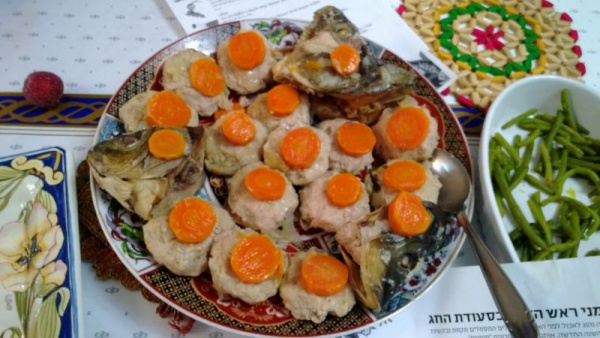Facts About Gefilte fish
Gefilte fish is a cherished traditional dish in Ashkenazi Jewish households, made from ground, deboned fish such as carp, whitefish, or pike. Typically served as an appetizer, it has evolved from its original form—minced fish stuffed inside the fish skin—into more familiar patties or fish balls. You will often find it on the table during Shabbat and Jewish holidays like Passover.
In Poland, this dish, known as "karp po żydowsku" is also a cherished tradition in some Polish homes, particularly during Christmas Eve and Holy Saturday. The preparation usually involves grinding fish fillets with eggs, onions, bread crumbs, and spices, then boiling this mixture in fish stock. It can be served cold or at room temperature, sometimes garnished with carrot slices and accompanied by a horseradish mixture called chrain.
Historically, gefilte fish was an economical dish that maximized the use of fish bones and other ingredients like matza meal or bread crumbs to stretch the fish further. It also catered to the religious rule against picking bones on the Sabbath. Depending on the region, the dish can be sweet or savory, with sugar or black pepper hinting at regional preferences.
Today, you can find ready-to-serve gefilte fish in patties, balls, or logs, often packed in fish broth jelly. There are even low-salt and sugar-free options available. For religiously observant Jews, gefilte fish remains a staple Shabbat food to avoid breaking the prohibition of "borer" which involves sorting or selecting items from a mixture.
Gefilte fish holds a special place in both Jewish and Polish culinary traditions, shaped by regional tastes and religious practices.

 Egypt
Egypt